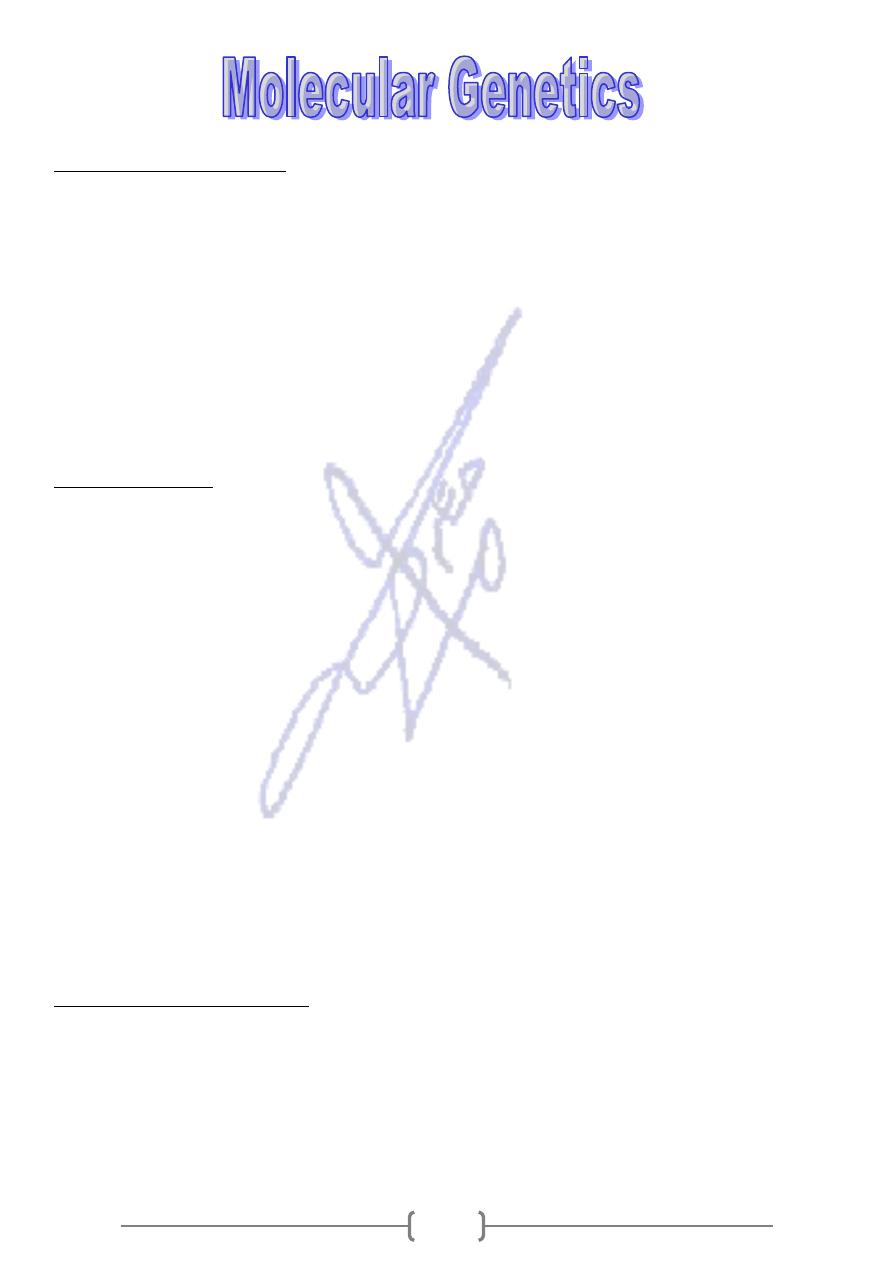
81
Importance of genetics:
Genetics is playing an important role in the practice of clinical medicine. Medical genetics is
now becoming central components of our understanding of most major diseases. These include
not only pediatric diseases, but also common adult diseases such as heart disease, diabetes,
and many cancers.
Medical genetics involves any application of genetics to medical practice, it thus includes:
* Studies of the inheritance of disease in families.
* Mapping of disease genes to specific locations on chromosomes
* Analysis of the molecular mechanisms through which genes cause disease
* Diagnosis and treatment of genetic disease (ex. Gene therapy)
A brief History:
* In 1865: Gregor Mendel, performing a series of designed experiments on living organisms
(garden peas). He then used this experimental information to formulate a series of
fundamental principles of heredity.
* In 1900: Landsteiner discovered the ABO blood groups.
* In 1902: Garrod described "alkaptonuria" as the first "inborn error of metabolism".
* In 1909: Johannsen use the term "gene" to denote the basic unit of heredity.
* In 1944: Oswald Avery showed that genes are composed of Deoxyribonucleic acid (DNA).
* In 1953: James Watson and Francis Crick describe the physical structure of DNA which
formed the basis for what is now known as a molecular genetics (the study of the structure
and function of genes at the molecular level).
* In 1956: the human chromosome number was corrected from 48 to 46 chromosomes, and
then
* In 1959: scientists discovered that Down syndrome is caused by an extra copy of
chromosome 21.
* In 1990: the beginning of Human Genome Project which provided the complete human DNA
sequences in the year 2003
* (the term genome refers to the entire DNA in an organism).
Types of Genetic Diseases
Each human is estimated to have approximately 30000 to 40000 different genes. Alterations in
these genes, or in combinations of them, can produce genetic disorders. These disorders are
classified into several major groups:
1. Chromosomal disorders: in which entire chromosomes (or large segments of them) are
missing, duplicated, or altered. These disorders include diseases such as Down syndrome
and Turner syndrome.

81
2. Single-gene disorders: single genes are altered; these are often termed "mendelian"
conditions. Examples include Cystic fibrosis, Sickle cell disease, and hemophelia
3. Multifactorial disorders: result from combination of multiple genetic and environmental
causes. Example, many birth defects, such as Cleft lip or Cleft palate as well, as many adult
disorders including Heart disease, cancer, and Diabetes
4. Mitochondrial disorders: small number of disease caused by alteration in the small
cytoplasm mitochondrial chromosome
Concepts Defined
Gene: a unit of hereditary information consisting of a particular nucleotide sequence found on
a chromosome.
Allele: an alternative form of a gene.
Homozygous: describes a genetic condition characterized by the presence of two identical
alleles for a given gene.
Heterozygous: describes a genetic condition characterized by the presence of two different
alleles for a given gene; the individual contains one dominant and one recessive allele in a gene
pair.
Chromosome: is an organized structure of DNA and protein found in cells. It is a single piece of
coiled DNA containing many genes, regulatory elements and other nucleotide sequences.
Chromosomes also contain DNA-bound proteins, which serve to package the DNA and control
its functions.
that make up the contents of the nucleus
combination of DNA and proteins
is the
Chromatin:
of a cell.
The primary functions of chromatin are:
*
1- package DNA into a smaller volume to fit in the cell
meiosis
and
mitosis
Strengthen the DNA to allow
-
2
3- Prevent DNA damage,
.
DNA replication
and
gene expression
Control
-
4
that compact the DNA.
histones
are
The primary protein components of chromatin
*
Chromatin is only found in eukaryotic cells.
have a very different organization of their DNA which is referred to as a
Prokaryotic cells
genophore (a chromosome without chromatin).
Autosomes: The names for all the chromosomes that are not sex chromosomes; chromosomes
that occur in homologous pairs in both males and females and do not bear the genes
determining sex.

82
Homologous chromosomes: a pair of chromosomes that are matched because they have the
same physical appearance and possess genes for the same characteristics; one homologous
chromosome is inherited from the father and the other homologous chromosome is inherited
from the mother.
Non homologous chromosomes: chromosomes that are not alike; when compared, these
chromosomes are different physically and bear genes for different characteristics.
Sex chromosomes: the pair of chromosomes that determine sex in an organism; the X and Y
chromosomes in humans.
Sex determination: the combination of sex chromosomes that determine the sex of an
offspring; in humans the sex chromosomes of a normal female are XX and the sex
chromosomes of a normal male are XY.
Genetic linkage: the inheritance of certain genes as a group because they are found closes
do not
together on the same chromosome; linked genes on sex chromosomes or autosomes
show independent assortment.
Crossing Over: homologous chromosomes exchange segments.
Nucleic acids: includes DNA (deoxyribonucleic acid) and RNA (ribonucleic acid). Together with
proteins nucleic acids make up the most important macromolecules ; each is found in
abundance in all living things, where they function in encoding, transmitting and expressing
genetic information
Deoxyribonucleic acid (DNA): is a nucleic acid containing the genetic instructions used in the
development and functioning of all known living organisms (with the exception of RNA
. Likewise, other
genes
). The DNA segments carrying this genetic information are called
viruses
DNA sequences have structural purposes, or are involved in regulating the use of this genetic
.
life
are essential for all known forms of
DNA
,
proteins
and
RNA
n. Along with
informatio
Ribonucleic acid (RNA): Like DNA, RNA is made up of a long chain of components called
nucleotides. Each nucleotide consists of a nucleobase, a ribose sugar, and a phosphate group.
The sequence of nucleotides allows RNA to encode genetic information. All cellular organisms
use messenger RNA (mRNA) to carry the genetic information that directs the synthesis of
proteins. In addition, many viruses use RNA instead of DNA as their genetic material.
Recombinant DNA: DNA that has been altered as a result of the recombination of genes; the
formation of new combinations of different alleles of each gene on a chromosome; the result
of crossing over.
